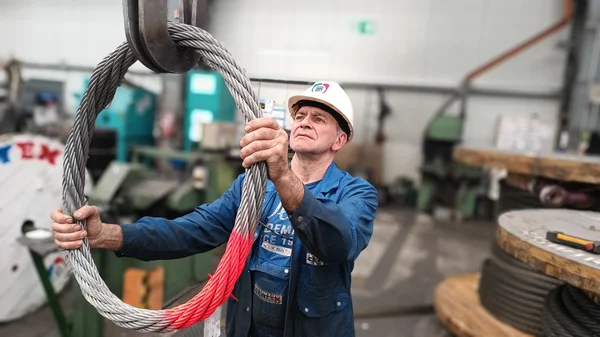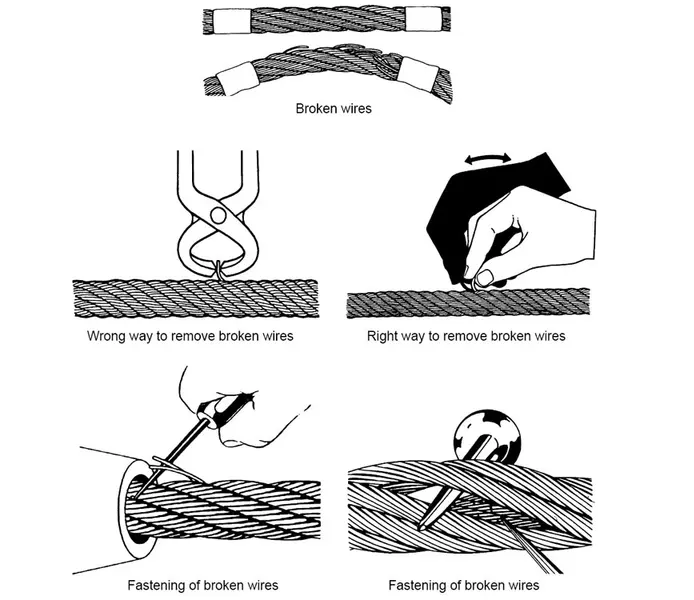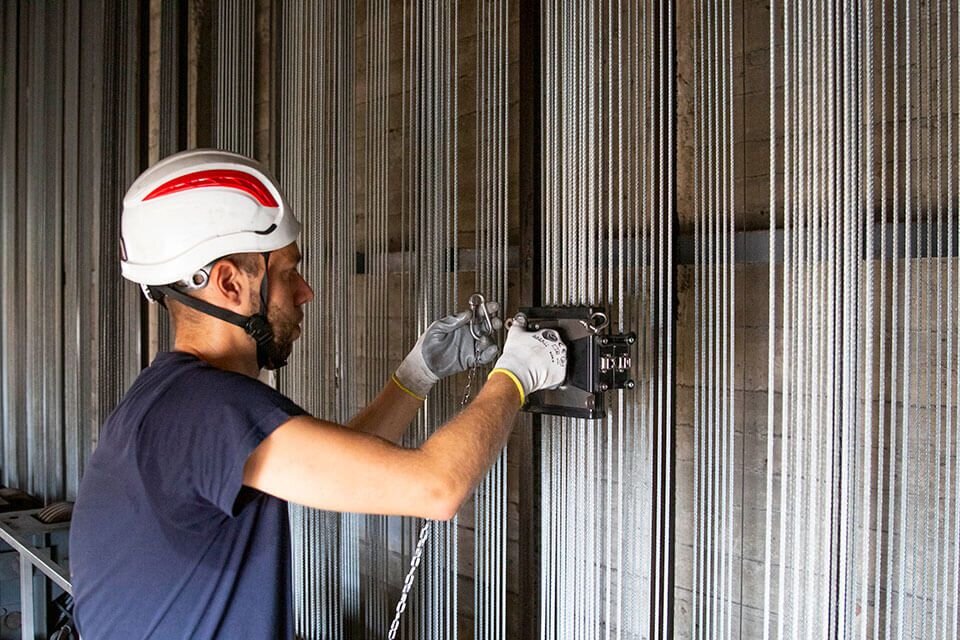Inspection of steel wire ropes
Steel wire ropes undergo wear and tear during usage and require regular inspection.
A daily visual inspection must be conducted, focusing on at least the intended working section of the rope for that day. The aim is to identify any signs of mechanical damage or deterioration. This inspection encompasses checking the attachment points of the rope to the crane, ensuring proper spooling of the rope, and smooth operation over sheaves.
Any observable changes should be promptly reported, and any detected damage must be examined by an expert.
Regular inspection
Steel wire rope should undergo inspection at least once every 12 months, or more frequently as required by local legislation, conducted by a competent individual. Records of these examinations should be kept.
For winches and cranes, steel wire rope must be inspected regularly in accordance with ISO 4309 standards.
In the case of elevators, inspections should adhere to both ISO 4309 and ISO 4344 standards.
Steel wire rope used in cableway installations designed for carrying persons should be inspected according to EN 12927 regulations.
When inspecting the steel wire rope, particular emphasis should be placed on the sections of the wire that are empirically prone to wear and damage.
Wear, broken wires, distortion, and corrosion are the most frequently observed visible indicators of deterioration.


Inspection
Wear is a common occurrence during rope service, and proper rope construction ensures that it remains a secondary factor in deterioration. Adequate lubrication of the rope may assist in reducing both external and internal wear.
Broken wires typically occur in wire rope service as the rope nears the end of its lifespan, often due to bending fatigue and wear. The localized breaking of wires might suggest a mechanical issue with the equipment. Proper lubrication during service can enhance fatigue resistance.
WARNING: Do not cut the wire, bend it until it breaks close to the inside of the strand. This reduce the risk for ends of wires sticking out of the rope.
Distortions typically stem from mechanical damage and, if significant, can significantly reduce the strength of the wire rope.
Corrosion on both the outer and inner wires indicates inadequate lubrication. Pitting on the external surface of the wire can lead to wire breakage. Inner corrosion occurs in certain environments when lubrication is insufficient or of an unsuitable type. A decrease in wire rope diameter often suggests this condition, but confirmation can only be achieved through internal examination of the wire rope.
Examples of damage and wear on steel wire ropes

Mechanical damage

Localised wear

Fatigue fractures

Bending

Protrusion of fiber main core

Abrasion

Corrosion

Protrusion

Wire fractures
Modern test method (MRT)
The visual inspection is the initial method employed to evaluate the integrity of a metallic wire rope accurately. This approach involves a thorough examination of the rope, meticulously searching for signs of deterioration, and documenting the findings. Throughout the various iterations of ISO 4309, visual inspection has consistently been recognized as the primary or sole inspection method, although recent versions now incorporate Magnetic Rope Testing (MRT). It is crucial to distinguish visual inspection from a mere search for macro-defects; rather, it is a nuanced and intricate process that demands the expertise of a qualified individual. A proficient technician must be able to identify various types of defects, including broken wires, valley breaks, and waviness. The duration of such inspections can vary significantly, contingent upon factors such as the condition of the rope and inspection environment.
Contact us, if you have any questions.

Do you want to learn more?
Contact us or read more articles about steel wire ropes.



